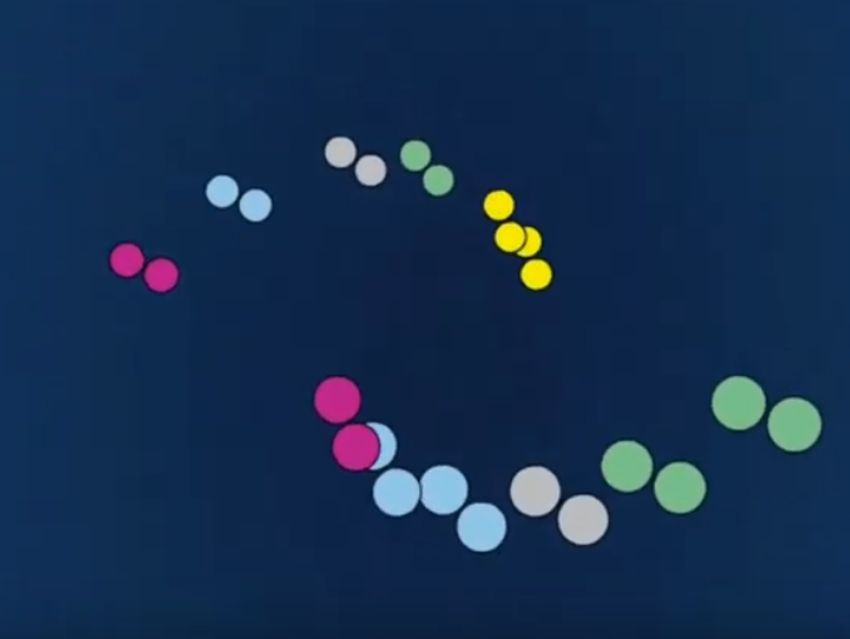14 years ago, on May 21, 2010, ChemistryViews was launched in Paris, France, during a spectacular symposium with four Nobel Laureates and many other leading scientists. The magazine was launched that day with about 50 articles and a live broadcast of the event. Virtual live events were extremely rare at the time, and the whole thing was naturally very exciting …
14 is not a special anniversary, nor do we want to dwell on the past. So the anniversary got us thinking and brainstorming about the number 14.
- The Periodic Table – Science
Silicon has the atomic number 14 and the electron configuration 1s22s22p63s23p2. The atomic weight of nitrogen is close to 14 (14.0067). Carbon-14 decays into nitrogen-14 through beta decay. The carbon family, Group 14 in the p-block, contains carbon (C), silicon (Si), germanium (Ge), tin (Sn), lead (Pb), and flerovium (Fl). The first ionization energy of krypton is close to 14 (13,999) … OK, this is not particularly surprising for a chemist. How about this: - Bach’s Musical Passion – Music
Johann Sebastian Bach (1685–1750), the famous German composer, is said to have been fascinated by the number 14. The letters of his last name B-A-C-H add up to 14 in the “natural number alphabet” (where A=1, B=2, etc.). This mysticism of numbers inspired Bach to write several compositions containing 14 themes or motifs, such as the “Fourteen Fugues” and the “Canonical Riddle on the Name B-A-C-H”. [1] - Romeo and Juliet – Literature
William Shakespeare’s Juliet in Romeo and Juliet was 13 or 14 years old. - Nobel Prizes – Science
The 14th Nobel Prize in Chemistry was awarded in 1914 to the American physical-chemist Theodore William Richards (1868–1928) “in recognition of his accurate determination of the atomic weights of numerous chemical elements”. He was the first American scientist to receive the Nobel Prize in Chemistry. The 14th Nobel Prize in Physics was awarded to the German physicist Max von Laue (1879–1960) for his discovery of the bending of X-rays as they pass through crystals [2]. - Moonlight Sonata – Music
The Piano Sonata No. 14, also known as Moonlight Sonata, is one of the most famous piano sonatas composed by Ludwig van Beethoven (1770–1828). - Polyeder – Science
A regular tetrahedron cell, the simplest uniform polyhedron and Platonic solid, is made up of a total of 14 elements: 4 edges, 6 vertices, and 4 faces. A tetradecahedron is a polyhedron with 14 faces. There are numerous topologically distinct forms of a tetradecahedron. Many can be constructed entirely from regular polygons. Lord Kelvin first proposed that mammalian epidermal cells are shaped like flattened tetrakaidecahedra [3]. A so-called flattened Kelvin’s tetrakaidecahedron (f-TKD) is an optimal shape for filling space. The polyhedron can also be found in soap bubbles and sintered ceramics due to its ability to tessellate in 3D space [4]. - Macrocycle Synthesis – Science
Lissodendoric acid A is a natural product with an azadecalin core, a 14-membered macrocycle, and two stereocenters (one quaternary). Neil K. Garg, University of California, Los Angeles, USA, and colleagues have recently succeeded in the first total synthesis of lissodendoric acid A, using a Diels–Alder cycloaddition involving a strained azacyclic allene [5]. - Aromaticity – Science
Cyclotetradecaheptaene, or [14]annulene, is a hydrocarbon with the molecular formula C14H14. It played an important role in the development of criteria for aromaticity (Hückel’s rule). Although the conjugated ring contains 4n+2 electrons, it does not fully conform to Hückel’s rule because none of its cis/trans isomers can adopt a fully planar conformation due to the displacement of the internal hydrogen atoms. - Rihanna – Music
The U.S. singer Rihanna had a total of 14 number-one hits on the US Billboard Hot 100 [6]. - Upgrading Natural Gas – Science
The separation of C2 hydrocarbons from methane is a technological challenge for natural gas upgrading. UNT-14 is a new metal-organic framework (MOF) recently developed by Shengqian Ma, Mohammad A. Omary, and colleagues from the University of North Texas, Denton, USA. UNT stands for University of North Texas. The researchers suggest that UNT-14 could be a promising material for the selective separation of C2Hn and CH4 under ambient conditions [7]. - Xabi Alonso – Sports
Xabi Alonso, coach of this year’s German Bundesliga champion Leverkusen, wore shirt number 14 when he was still active as a football player, playing for Liverpool in the UK, Real Madrid in Spain, and Bayern München in Germany. - Ring Macrolides – Science
Since the 1950s, 14-membered ring macrolide antibiotics such as erythromycin have been used not only as antibiotics but also for other therapeutic benefits. Erythromycin helps the digestive system by acting on motilin receptors, and 14-membered ring macrolides, including erythromycin, roxithromycin, and clarithromycin, also reduce inflammation and modulate the immune system, unlike 16-membered ring macrolides. 14-membered ring macrolides and their derivatives also show potential in the treatment of solid tumors [8]. - 14-Karat Gold – Economics
In jewelry, 14-karat gold is a common standard, representing 58.33% pure gold mixed with other metals for durability and strength. Karat indicates the proportion of gold in a metal alloy out of 24 parts. Pure gold is defined as 24 karats (24k), meaning 24 out of 24 parts are gold, or 100% pure gold. Technically, only 99.99% can be reached. Accordingly, 14k gold means 14 parts gold and 10 parts other metals. These can include silver, copper, nickel, and zinc. Many European countries use decimal hallmark stamps, i.e., “585”, rather than 14k, which is used in the UK and US [9]. - The Universe – Science
The universe is almost 14 billion years old. About a second after the Big Bang, the cosmos was already filled with protons, neutrons, and electrons.
We also want to use this anniversary to thank you, our loyal readers, authors, supporters, fans, critics, and companions. Over the past 14 years, we have been privileged to be close to exciting research, remarkable people, and inspiring encounters that have changed and continue to change our community and the world. We are grateful to be surrounded by 16 European chemical societies whose publishing activities are united under the Chemistry Europe umbrella, as well as the editorial teams of Chemistry Europe’s 20 peer-reviewed journals.
At a time when science and technology are advancing at an unprecedented pace, and the way we communicate and inform ourselves is changing rapidly, our role in disseminating reliable scientific information is important. We look forward to continuing our journey together with you and a close exchange to encourage and inspire curiosity, to keep our love to experiment alive not only in the lab, and to spread the word about great research and ideas.
References
[1] Kai Luehrs-Kaiser, Johann Sebastian Bach – Fetischist der Vierzehn, Welt 24.04.2014. (accessed May 20, 2024)
[2] Nobelprize.org (accessed May 20, 2024)
[3] Mariko Yokouchi, Toru Atsugi, Mark van Logtestijn, Reiko J. Tanaka, Mayumi Kajimura, Makoto Suematsu, Mikio Furuse, Masayuki Amagai, Akiharu Kubo, Epidermal cell turnover across tight junctions based on Kelvin’s tetrakaidecahedron cell shape, eLife 2016, 5: e19593. https://doi.org/10.7554/eLife.19593
[4] MOST SPACE FILLING STRUCTURE IN THE WORLD! – TETRADECAHEDRON, Ardent Metallurgist 26 July 2020. (accessed May 20, 2024)
[5] Total Synthesis of Lissodendoric Acid A, ChemistryViews May 3, 2024.
[6] Rihanna singles discography, Wikipedia (accessed May 20, 2024)
[7] Metal–Organic Framework for C2 Hydrocarbon Separation from Methane, ChemistryViews May 3, 2024.
[8] J. Yatsunami, S. Hayashi, Fourteen-membered ring macrolides as anti-angiogenic compounds, Anticancer Res. 2001. 21(6B):4253-8.
[9] Karat (Feingehalt), Wikipedia (accessed May 20, 2024)
Correction
This story was updated on June 13, 2024, to correct the fact 11. We incorrectly referred to “Xabi” as “Xavi”.




